INSIDE ISSUE 17.41 | Oct. 12, 2018
NEWS: Despite continuing big storms, advocates say S.C. farmers have options
BRIEFS: Voting begins, teen health, Obamacare, more
CALENDAR: Higher education spotlighted in joint committee Wednesday
COMMENTARY, Brack: Big wall might mean bigger ladders, more
SPOTLIGHT: Francis Marion University
MY TURN, Tynan: Protect the places that tie us together
FEEDBACK: Letters on taxes, more
MYSTERY PHOTO: Pastoral scene in the Palmetto State
S.C. ENCYCLOPEDIA: Miles Brewton
NEWS: Despite continuing big storms, advocates say S.C. farmers have options
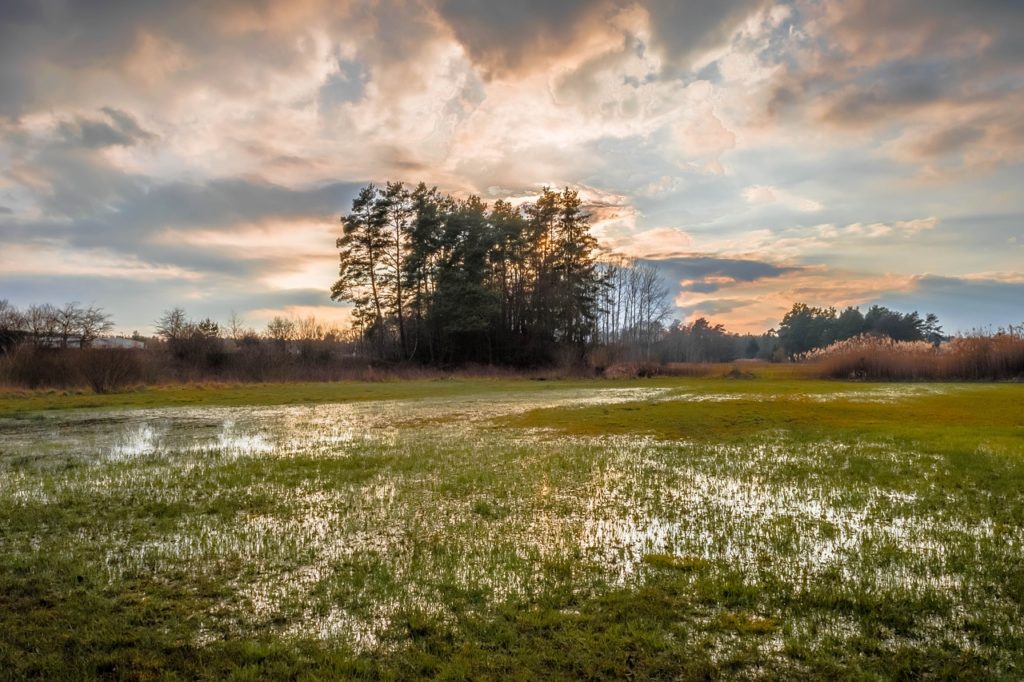
By Lindsay Street, Statehouse correspondent | Republican policy leaders, a farm lobbyist group and environmentalists say S.C. farmers need help weathering storm after storm.
“We have just had a really unfortunate series of weather events that have been right at the peak of harvest. They absolutely could not come at worst times for farmers,” S.C. Farm Bureau’s Stephanie Sox said. “How much more are they going to be able to take?”
The United Nations released an alarming report this week that says the world’s climate is rapidly changing due to human activities and, without changes to how humans currently live, there will be consequences on nature and food productions as early as 2030. Super-charged storms like hurricanes Florence and Michael, could become the norm, the report says.
The chairmen of the S.C. House and S.C. Senate’s agriculture committees told Statehouse Report that they have not read the report.
“I don’t spend a lot of time reading about climate change,” said S.C. Rep. David Hiott, R-PIckens.
His colleague from the upper chamber, Sen. Paul Campbell, R-Charleston,called reports of climate change “overplayed.”
“I have not seen enough data to convince me,” he said. But Campbell also said he understands farmers are getting “hammered.” He pledged that “the Senate committee is going to investigate the plight of the farmers and see what we can come up with because it continues to recur.”
Most farming advocates in the state are focused on recovery efforts and making sure aid, whether donated or tax dollars, gets to farmers in need. But environmental advocates like S.C. Coastal Conservation League, which has established a farmer distribution network, said the state needs to invest now to be proactive instead of reactive to storms.
“We need to take it seriously. We need to take it like we’re recruiting a big industry,” CCL Chief Conservation Officer Lisa Jones Turansky said. “(We need to) talk about those things in nonpolitical context and in a survival context.”
“Too much water:” The storms and recovery

S.C. Commissioner of Agriculture Hugh Weathers on Thursday did what thousands of farmers across the state were doing: assessing potential damage from yet another tropical system that spun into South Carolina.
Weathers said farming is a partnership with nature, but added he cannot speak to climate change and the science behind it. A former dairyman, Weathers has thousands of acres of corn, soybeans and peanuts on his Bowman farm.
Aside from some down tree limbs, he told Statehouse Report his farm faired well in Tropical Storm Michael.
Other farmers may not be as lucky. The state has about 25,000 farms on 4.9 million acres, and they produce $3 billion annually, between crops and livestock, according to the S.C. Department of Agriculture. Those in the Pee Dee still haven’t recovered from Hurricane Florence’s flooding, which like the 2015 flood and 2016’s Hurricane Matthew, came during the peak harvest time.
The estimated agricultural damage from Florence is $82.5 million. In cotton alone, the state saw a loss of $56 million, according to numbers from Weathers’ agency. The number is greater than what farmers experienced in 2016 with Matthew ($50 million in losses), but eclipsed by the 2015 flood ($330 million in losses).
“Our farmers are resilient. They’ve had to be,” Weathers said. “I’ve been on the same farms in the Pee Dee counties for three of the past three years, for the same reasons: too much water.”
Weathers praised Gov. Henry McMaster in requesting federal aid for farmers in the state, but he said he feared the “bureaucratic and cumbersome” process of working with the federal government would delay getting money to farmers in need.
Weathers said he will appeal on behalf of farmers to lawmakers for a piece of the state’s surplus.
“It is time for the American consumer, by way of their tax dollars, to help right the ship so that food production in this country does not become volatile like other things in our economy,” he said.
Meanwhile, the Farm Bureau is working to establish an agricultural aid foundation, Sox said. This would directly benefit farmers affected by Hurricane Florence and could help farmers recover from future storms.
“We envision this fund as being something that is ongoing as we deal with more of these natural disasters,” she said.
Building resiliency
But recovery isn’t enough to help protect the state’s food producers, according to Turansky.
“It doesn’t make sense to me that a farmer doesn’t need help until their in crisis. Everybody can benefit from addressing a problem before it happens,” she said.
Turansky said voters should make food production and climate change central to their Nov. 6 and future elections decisions.
“We need to demand that our policy makers are helping to establish us as a resilient state,” she said. “We really need to see a dramatic shift in all levels of government if we want to make a difference.”
Turansky said helping to curb greenhouse gas emissions and making farmers more resilient in a changing climate go hand-in-glove by growing and eating locally wherever possible. This allows farmers to grow more varied crops. For example, instead of only growing corn, they would grow the staple crop, market produce and have fruit or nut trees. IN turn, that would provide greater stability. If one crop fails, there are others to fall back on.
Five years ago, the state commissioned a study to look into growing the farming economy and aiding the local food effort. Turansky said with better infrastructure, South Carolinians in the Lowcountry can buy apples from the Upstate and those in the Upstate can buy oysters from the Lowcountry. This would reduce the need for an apple to travel thousands of miles from Washington state — thereby cutting greenhouse gas emissions — and help those farmers diversify their income streams, making them more resilient, she said.
Turansky said initial investments would start at around $1 million to “kickstart those recommendations.” Since 2011, CCL has a program called GrowFood Carolina, which helps mid-sized farms with connecting their produce to customers.
Boosting sustainability
Weathers’ agency has worked on promoting South Carolina-grown food and focusing on more sustainable solutions in recent years.
“If (farmers) can diversify their crop mix, it helps with their ability to withstand,” Weathers said.
Sox said S.C. farmers have also been investing in biodiesel, which should help with further reducing greenhouse gas emissions.
However, Sox said, the state should be wary of any more government restrictions on farmers. She praised recent Environmental Protection Agency rollbacks as the federal government relaxes on pollution runoff and chemical use as being good for farmers in the state.
“Farms are a business. Each farmer decides which business model is the best model for them,” she said.
- Have a comment? Send to: feedback@statehousereport.com
NEWS BRIEFS
BRIEFS: Voting begins, teen health, Obamacare, more
Staff reports | South Carolina journalists scrambled this week with news of the sudden resignation of U.N. Ambassador and former S.C. Gov. Nikki Haley, the release of the corruption probe report from a grand jury and Tropical Storm Michael making a mad dash across the state.
![]() But here are some items you may have missed:
But here are some items you may have missed:
Absentee voting underway. South Carolina election offices have opened for in-person absentee voters. If a registered voter can’t make it to the polls on Nov. 6, then he or she can cast a ballot between now and then. Not registered? No problem, you have until Oct. 17 to do so. Get your sample ballot here.
Teen pregnancy rates drop, again. According to S.C. Campaign to Prevent Teen Pregnancy, the decades-long decline in teen pregnancy rates in the state continues for another year, bringing it to a 70 percent decrease since its peak 1991. That deserves to be said again: 70 percent fewer teens are giving birth in South Carolina now than in 1991. There were 9 percent fewer teens giving birth in 2017 compared to 2016.
… But STDs on rise for teens. The same report that shows teen pregnancies are declining also shows that cases of sexually transmitted diseases in teenagers are increasing in South Carolina. From 2016 to 2017, the state saw an 11 percent increase in the rate for chlamydia and a 35 percent increase in the rate for gonorrhea. However, HIV prevalence saw a 5 percent decrease in that same time.
Another Obamacare insurer comes to S.C. Since 2017, BlueCross BlueShield of South Carolina has been the only provider of federally subsidized health insurance plans in the state. But now, a second provider has emerged: Absolute Total Care. But the insurer, which offers non-subsidized insurance plans in every county in the state, says it will only sell its Affordable Care Act market plans to Charleston County residents. Read more here.
Pat on the back. Statehouse Report is mentioned in a new report on state fiscal policy by the Cato Institute. The report, which gave South Carolina an “A” grade, noted that states in 2018 had to deal with impacts of federal tax reform from 2017 that broadened state tax bases. States could conform to the federal tax code to keep filing easier for residents, which would raise taxes, or do so in a manner that returned some of the revenue to state taxpayers (which South Carolina eventually did). The Cato report quoted from our May 25 issue when it wrote, “South Carolina’s situation is representative of that faced by many states. A state report noted that if ‘the state doesn’t take action to account for the federal changes, South Carolina would receive a few million dollars more in income tax revenue but, by default, create a duplicative tax system that would likely be a nightmare to tax filers. Meanwhile if legislators decide to conform to federal reform without making major changes to the state’s tax code, South Carolina could generate a whopping $200 million in extra revenue. . . . Yet another option would be for the state to conform to the federal code and make changes to the state’s tax code to offset the extra revenue.'” Thanks for the pat on the back!
- Have a comment? Send to: feedback@statehousereport.com
CALENDAR: Higher education spotlighted in joint committee Wednesday
![]() Staff reports | The Joint Education and Finance Study Committee meets 1 p.m. Oct. 17 in room 105 of the Gressette building. Here’s what’s on the agenda:
Staff reports | The Joint Education and Finance Study Committee meets 1 p.m. Oct. 17 in room 105 of the Gressette building. Here’s what’s on the agenda:
- Commission of Higher Education Executive Director Jeffrey M. Schilz will discuss his agency’s role.
- Francis Marion University President Luther F. Carter will discuss the changes faced a four-year, public institutions.
- University of South Carolina President Harris Pastides will discuss how research institutions have changed.
- S.C. Technical System President Tim Hardy will speak about higher education as it relates to technical colleges.
- See the full agenda here. The joint committee will meet again Oct. 23.
Click below for other items coming up in the Statehouse:
- House calendar
- Senate calendar
- Have a comment? Send to: feedback@statehousereport.com
BRACK: Big wall might mean bigger ladders, more
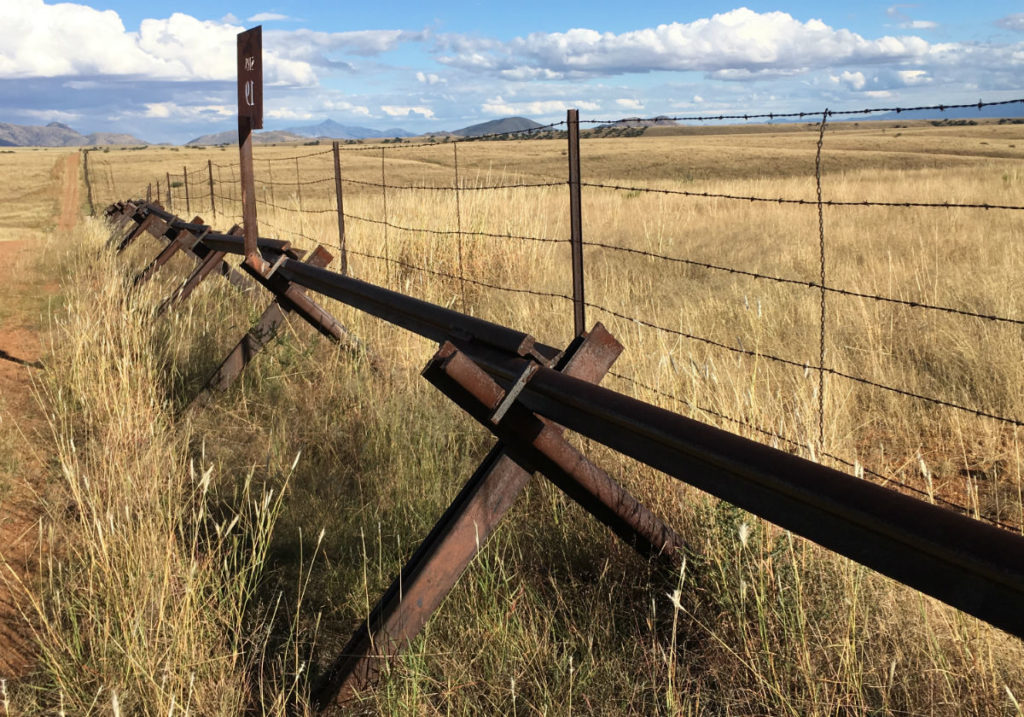
Commentary by Andy Brack, editor and publisher, Phoenix, Ariz. | An old joke around here is that if there’s ever a 30-foot border wall built to thwart illegal immigrants, it won’t be long before a lot of companies start building 32-foot ladders.
While the national furor over immigration reached a fever after candidate Donald Trump launched xenophobic campaign rhetoric to build a wall, immigration politics is old hat in Arizona, cropping up year after year as a political hot button.
In 1986, President Ronald Reagan pushed through immigration reform that allowed amnesty for undocumented workers. In turn, families moved north to be with undocumented workers who decided to stay. Then came the September 11 attacks that fueled fear and worry about border security, which led to searches, traffic stops and more of people with brown skin. Nowadays, it’s hard to pick up a newspaper or turn on the television without the politics of immigration rearing its head. Meanwhile, the northerly flow of people, now mostly from Central America, heading into the United States for better opportunities continues.
From now through election day, a documentary film team from Australia and America is traveling across the country to find out what’s driving politics locally and nationally as the 2018 midterm elections approach. In Arizona, for example, the airwaves are filled with ads related to immigration and education. In the weeks ahead, the team will be in South Carolina, MInnesota, Iowa, Indiana and Pennsylvania to find out what’s really going on America that’s missed by polls and preconceived notions.
In Arizona, it’s clear the polarizing immigration debate is much more complex than the fear-mongering mantra, “Build the wall.”
The people we talked with are looking for real solutions to curb the tide of illegal immigrants, but without the country losing its ideals as a home for legal immigrants to realize the American dream.
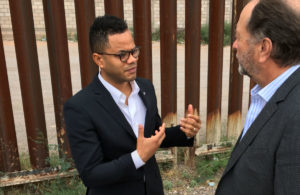
In the border city of Douglas, a southeastern Arizona community of 17,000, Democratic Mayor Robert Uribe says historically there’s been a healthy relationship between its sister city of Agua Prieta, population 80,000, just across the border. Mexicans and Americans cross daily to shop and do business. But after Trump took office, the American city saw its tax revenues drop at least 30 percent because fewer Mexicans shopped in local stores. Why? Because they were scared of the charged political environment.
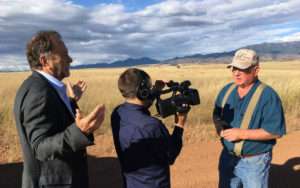
Since then, Uribe says he’s worked to partner with the sister city and assure people along the border than the two cities need to remain unified and continue to work together. Visitors have returned. But what the area needs, he says, is more money to pay for infrastructure to beef up security at the border checkpoint to keep out illegal drugs, 70 percent of which come into the country via vehicles in land ports like that in Douglas.
About 60 miles east in the San Rafael Valley, Dr. Gary Thrasher, a local veterinarian, pointed to the international boundary with Mexico — a six-strand barbed-wire fence and a short steel vehicle barrier. It’s not hard for anyone to get through. And people flow across the area, disappearing into the nearby mountains.
For Thrasher, a Trump voter, the problem is also resources. He wants the U.S. Border Patrol to police the boundary actively, not wait to detect and detain people after they’ve crossed and hot-footed it north.
“If you’re there, they won’t come,” he said, adding that more active security at the border would also stem terror threats.
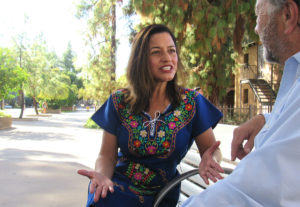
Arizona state Rep. Isela Blanc, a Democrat representing Tempe, came to the United States without documents during the Reagan amnesty period. Now 46, she’s a citizen and ran for public office to boost opportunities for people like her. In America, a country built by immigrants, it just isn’t right to continue the political exploitation of new immigrants, many of whom are on the run from despotic governments.
“We need to stop the demonizing and stop imagining something awful,” she said in an interview at her alma mater Arizona State University. “At the end of the day, we just want to give back to the nation that has given us so much.”
If you want to keep up with what we’re finding out in the weeks ahead, visit the website and social media associated with the documentary, A Hard Road: Travels in Trump’s America.
- Have a comment? Send to: feedback@statehousereport.com.
SPOTLIGHT: Francis Marion University
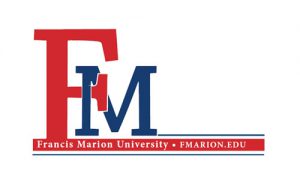 The public spiritedness of our underwriters allows us to bring Statehouse Report to you at no cost.
The public spiritedness of our underwriters allows us to bring Statehouse Report to you at no cost.
We’re happy this week to showcase Francis Marion University, a public university located in Florence, S.C. It was founded in 1970 with a mission to provide the people of the Pee Dee, and of South Carolina, with high quality, yet accessible, university education. FMU has stayed true to that mission for nearly 50 years. In any given year, more than 95 percent of the university’s students are South Carolinians, and FMU is, by most measures, the most affordable college in the state.
Francis Marion University is, of course, named for Revolutionary War hero, General Francis Marion, who was nicknamed “The Swamp Fox” for his uncanny ability to use terrain, local knowledge and just plain old South Carolina common sense to outfox the British. Today, FMU prides itself on providing a strong liberal arts education for its 4,000 students, while at the same preparing them for careers in a broad range of fields.
The University offers professional schools in health care, education and business, as well as graduate programs in business, education and psychology. FMU’s new School of Health Sciences is adding new programs, designed to help deliver critical medical services to the community, on an almost annual basis, so great is the demand by students and the need in our region and state. Recent undergraduate additions to the University as a whole include Health Care Management and Industrial Engineering. The latter, just begin in 2014, is already one of the fastest-growing majors on campus.
The campus is situated on over 400 wooded acres of beautiful foliage and landscaping. A significant campus presence in historic downtown Florence is also developing. FMU’s Performing Arts Center is located there along with the Carter Center for Health Sciences, and the FMU Recording Studio, The University recently acquired more downtown property near the Carter Center, which will help support future academic expansions.
FMU has managed to grow while at the same time providing South Carolinians with, as noted, an affordable university education. FMU’s total net cost — tuition plus room, board and other fees, less scholarships and grants awarded — is South Carolina’s lowest, and by a considerable margin, according to calculations performed by a third party, CollegeFactual.com. FMU has managed this unusual balance of quality and affordability by avoiding capital debt, minding administrative costs carefully, and developing a culture of giving among its many friends and supporters in the Pee Dee and beyond.
- To learn more about Francis Marion, visit online at fmarion.edu.
- More: http://www.aclusouthcarolina.org/
MY TURN, Tynan: Protect the places that tie us together
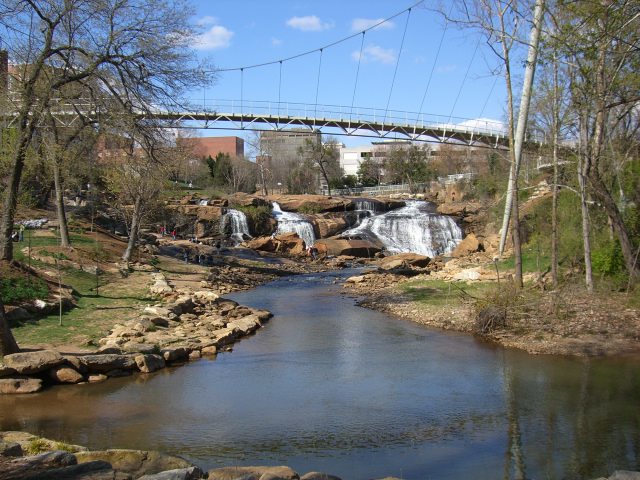
By John Tynan, special to Statehouse Report | Counting votes in a roll call starts before a vote is ever cast on the floor of our Statehouse, and it starts by counting along party lines. There have always been divisions between parties, but it seems the last few years have widened that crack into a chasm. From the outside looking in, it can sometimes seem like legislators care more about their loyalty to a party line than the greatest benefit for the greatest number of their constituents.
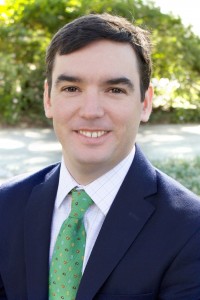
If you think about the current spheres of public information and media, you think about the disagreements, fights and missteps you read in daily headlines. Those spheres might lead you to believe the overall environment in the Statehouse is chaotic, full of confrontation and unproductive. But those common perceptions, often built by the easily accessible information sources in our already busy lives, aren’t letting people see the big picture – the whole truth.
There are threads that connect all members of a community. Threads like clean drinking water, protecting family farms, protecting our historical sites and protecting our access to recreation, fishing and hunting keep us tied together. Those threads also tie our legislators together.
Each of those threads is a mission of the South Carolina Conservation Bank, which was founded in 2002. It was set to expire this year, but state officials passed a bill to fund the project in perpetuity. Not only is that a conservation victory in perpetuity, but it passed both chambers unanimously. In a seemingly divisive political climate, unanimous support from both chambers is an impressive sight.
The Conservation Bank has protected over 288,000 acres across the state, including hunting and fishing access, camping and public park creation. But it isn’t the only conservation tool in the land protection toolbox. Many of our communities and every one of our South Carolina counties has a project funded by the Land Water Conservation Fund.
LWCF is a federal program, but it doesn’t come out of taxpayers’ pockets. Its funding comes from royalties paid by companies using federal lands to harvest our natural resources. The program is vitally important to local governments because it provides funding for ballparks, city recreation areas, athletic fields and other parks that are crucial to keeping our communities together.
Unfortunately, gridlock in Washington caused LWCF to expire last month on September 30. Even more unfortunate is that this could mean millions of dollars lost for small towns and communities all across the state. Since its inception, South Carolina has received $294 million in funding from LWCF.
But there’s hope. Like the S.C. Conservation Bank, the LWCF enjoys bipartisan support in Congress. So much so there are more than 230 cosponsors for the LWCF Reauthorization Act in the U.S. House –including Mark Sanford, Joe Wilson and Tom Rice.
Since LWCF has already expired, the need to act quickly and in a bipartisan manner couldn’t be greater. The reauthorization is still doable, but it needs all the help it can get. It’s time for residents, local leaders, state officials and our federal delegation alike to come together. It’s time to protect our history, culture, heritage and outdoors access for good. These parks, campsites and wildlife management areas belong to all of us. In the seemingly divided atmosphere of our current political climate, it’s time we rally together to protect the threads – and places – that tie us together as a community, as a state, and as a nation.
John Tynan is executive director of the Conservation Voters of South Carolina.
- Have a comment? Send it to: feedback@statehousereport.com.
FEEDBACK
Most don’t want to raise taxes, unfortunately
To the editor on Doing the right thing for South Carolina:
Years ago when my kids were younger, they asked me why no one I voted for ever won. I told them that I voted for folks who I thought would change South Carolina. I told them that many folks in S.C. were happy the way the state was when they were children. Our schools, roads, government and health systems in our state are so behind what they should be. I believe we can be better. Unfortunate for us, most of the citizens do not want to increase taxes to improve our state. Two or three leaders in the Legislatures cannot make a difference.
My kids, now adults, still wonder about me.
— Bob Noe, Columbia, S.C.
What one man wants, too.
To the editor about What women want — a better, safer South Carolina for themselves and others:
Sound very good to me. I want this too.
— Fred Palm, Edisto Beach, S.C.
Send us a letter. We love hearing from our readers and encourage you to share your opinions. But you’ve got to provide us with contact information so we can verify your letters. Letters to the editor are published weekly. We reserve the right to edit for length and clarity. Comments are limited to 250 words or less. Please include your name and contact information.
- Send your letters or comments to: feedback@statehousereport.com
MYSTERY PHOTO: Pastoral scene in Palmetto State

This could be a pastoral scene from jolly old England … but it’s not. It’s in South Carolina, but where? Send your guess to: feedback@statehousereport.com. And don’t forget to include your name and the town in which you live.
Our previous Mystery Photo
 Our Oct. 5 mystery, a screaming eagle, is Winthrop’s mascot … and is portrayed prominently in bronze on the university’s Rock Hill campus.
Our Oct. 5 mystery, a screaming eagle, is Winthrop’s mascot … and is portrayed prominently in bronze on the university’s Rock Hill campus.
A big tip of the hat to this week’s sleuths: Rebecca Masters of Charlotte; state Rep. Tommy Pope of York; Carrie Morphis and Jay Altman, both of Columbia; Philip Cromer of Beaufort; George Graf of Palmyra, Va.; Craig Jacobs of Spartanburg; Patricia Wolman of Mount Pleasant; Wayne Beam of North Myrtle Beach; Don Clark and Bill Segars, both of Hartsville; Steve Willis of Lancaster; and Lexie Chatham of West Columbia. Good work, all!
Graf provided some context: “According to Winthrop.edu, a 12-foot tall eagle sculpture was installed near the main entrance of the campus on Oakland Avenue. Cornelius, N.C., artist Jon Hair was commissioned to create the original piece of art. While the sculptor is known for his realistic designs, Hair created a more stylistic eagle for Winthrop based on the university logo.
“Hair worked on the Winthrop eagle for 18 months. The massive eagle, with its 12-foot wingspan, was cast in bronze at a foundry in Hawthorne, Calif., and then shipped to Santa Fe, N.M., for a process that resulted in a metallic gold finish. The eagle sculpture will sit on a nearly 20-foot-tall concrete and brick pedestal designed by Hair and built by Leitner Construction Company of Rock Hill.
“Known for his monumental works, Hair has sculpted pieces for galleries, private collections, corporate offices and more than a dozen college campuses. In 2003, Hair was designated ‘Official Sculptor of the U.S. Olympic Team’ and ‘Official Sculptor of the U.S. Olympic Committee.’ The Winthrop monument is the third Hair sculpture for a South Carolina higher education institution.”
Send us a mystery: If you have a photo that you believe will stump readers, send it along (but make sure to tell us what it is because it may stump us too!) Send to: feedback@statehousereport.com and mark it as a photo submission. Thanks.
S.C. ENCYCLOPEDIA
HISTORY: Miles Brewton
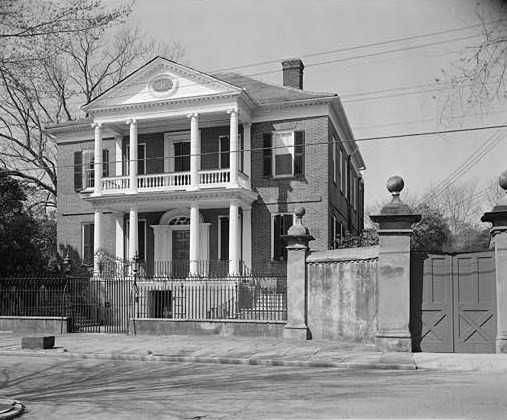
S.C. Encyclopedia | Merchant and legislator Miles Brewton was born on Jan. 29, 1731, in Charleston to Robert Brewton, a prosperous goldsmith, and his second wife, Mary Griffith. His grandfather Miles Brewton had immigrated to South Carolina from Barbados in 1684 and became a goldsmith and militia officer.
Since his family’s trade was allied to banking, young Miles was well placed for a career in finance and trade. Twice during the 1750s, he traveled to England to finish his education and establish commercial ties. Between 1756 and his death, Brewton conducted business in several partnerships and was part-owner in eight commercial vessels. His partnerships dealt largely with the exportation of domestic produce, but he also made substantial profits in the importation of slaves.
On May 19, 1759, Brewton further expanded his fortune and influence by marrying Mary Izard, daughter of Joseph Izard and Ann Bull. The couple had three children. Through his marriage, numerous land grants, and purchases, Brewton accumulated a large quantity of real estate. However, he made his fortune principally as a merchant rather than as a planter, becoming one of the wealthiest men in South Carolina.
In 1769 Brewton constructed a grand house on King Street and decorated it in the latest English taste. Still standing in the early twenty-first century, the structure is considered one of the finest examples of Georgian architecture in America. During a visit to Charleston in 1773, the Bostonian Josiah Quincy, Jr., dined at Brewton’s town house with several prominent local figures. He described Brewton as “a gentleman of very large fortune” and marveled at his host’s conspicuous wealth. He pronounced the mansion “the grandest hall I ever beheld” and its furnishings “vastly pretty.”
In public life, Brewton was active in the Charleston Library Society and was an officer of the South Carolina Society. In his will he left a legacy of £500 sterling to support the South Carolina Society’s free primary school and £1,000 sterling to establish a college in South Carolina. He served as a commissioner of several public bodies in Charleston, including the Work House and Markets and the projects to build the Exchange and magazines. In 1773 he was elected vice president of the Charleston Chamber of Commerce. Brewton served in the Commons House of Assembly from 1765 until his death, representing the parishes of St. Philip’s, St. John’s Colleton, and St. Michael’s in succession.
In 1773 Lieutenant Governor William Bull recommended him for a seat on the Royal Council, but Brewton’s support of anti-government measures led him to decline the seat. In July 1774 Brewton stood as a conservative South Carolina candidate for the First Continental Congress, but he lost to the more radical Christopher Gadsden. Brewton represented the parishes of St. Philip’s and St. Michael’s in the First Provincial Congress in 1775 and there was elected to the Council of Safety. Lord William Campbell, the last royal governor of South Carolina, was married to Mary Brewton’s first cousin, and on his arrival in Charleston in 1775 he briefly resided at Brewton’s King Street mansion. Also in 1775 Brewton was reelected to the Provincial Congress for its second term, but he would not be able to serve in that body. In late August 1775, on a voyage from Charleston to Philadelphia, Brewton and his family were lost at sea
— Excerpted from an entry by Nic Butler. This entry hasn’t been updated since 2006. To read more about this or 2,000 other entries about South Carolina, check out The South Carolina Encyclopedia, published in 2006 by USC Press. (Information used by permission.)
ABOUT STATEHOUSE REPORT
Statehouse Report, founded in 2001 as a weekly legislative forecast that informs readers about what is going to happen in South Carolina politics and policy, is provided to you at no charge every Friday.
- Editor and publisher: Andy Brack, 843.670.3996
- Statehouse correspondent: Lindsay Street
More
- Mailing address: Send inquiries by mail to: P.O. Box 22261, Charleston, SC 29407
- Subscriptions are free: Click to subscribe.
- We hope you’ll keep receiving the great news and information from Statehouse Report, but if you need to unsubscribe, go to the bottom of the weekly email issue and follow the instructions.
- © 2018, Statehouse Report. All rights reserved.















 We Can Do Better, South Carolina!
We Can Do Better, South Carolina!